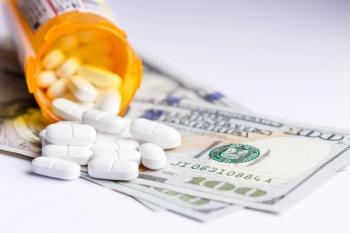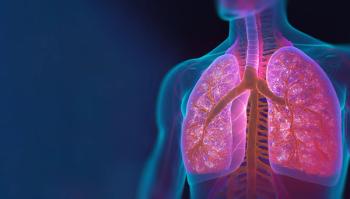
- Influenza Guide for Pharmacists
- Volume 1
- Issue 1
Influenza in the Time of COVID-19: What Pharmacists Need to Know
Many measures that were concomitantly being instituted across the country to curtail the spread of COVID-19 also decreased the spread of the influenza virus.
Since the beginning of the coronavirus disease 2019 (COVID-19) pandemic, comparisons with seasonal influenza have been described because of their overlapping, nonspecific symptomatology and broad range of disease severity. However, there are important distinctions. COVID19 appears more transmissible and more virulent than influenza.1 The incubation period of COVID19 is longer and many individuals are asymptomatic, therefore leading to substantial community spread.1,2 Seasonal influenza has a tremendous impact on the pediatric population, whereas pediatric cases of COVID-19 are relatively infrequent.3 Postinfluenza bacterial superinfections occurring earlier in the disease course are well documented, but this remains controversial in COVID-19.4 Severe complications of COVID-19 have largely been hematologic (eg, thromboembolic events) and neurologic in nature which are not commonly observed with influenza virus.5,6 Mortality rates of COVID-19 seem to be higher than with influenza (3.0% to 4.0% vs 0.1%, respectively), although definitive numbers are not yet confirmed.7-9
As COVID-19 began to rapidly spread in the United States at the beginning of 2020, rates of influenza declined.10,11 This may have occurred because, although it was the end of influenza season, many measures that were concomitantly being instituted across the country to curtail the spread of COVID-19 (ie, social distancing, health-seeking behaviors, etc) also decreased the spread of the influenza virus.12 As a result, influenza surveillance data available for 2020 should be assessed with this information in mind.
With all these distinctions, it is important that pharmacists are aware of the latest developments regarding COVID-19 and the changes that will impact vaccination for influenza and other vaccinepreventable illnesses.
COVID-19 EPIDEMIOLOGY AND SYMPTOMATOLOGY
It is not yet completely known how severe acute respiratory syndrome coronavirus 2 (SARSCoV-2), the virus that causes COVID-19, and influenza viruses will “coexist,” in terms of both epidemiology and symptomatology.13,14 Literature on coinfection is limited, although the results of a study by Kim and colleagues in March 2020 indicated that 24 of 116 patients who tested positive for SARS-CoV-2 also tested positive for another respiratory virus, including influenza.15
Many respiratory diagnoses have overlapping symptoms. The table describes the most common respiratory illnesses, most of which are caused by viruses.8,16-32 Patients who are immunocompromised, those who have underlying lung disease, older adults, neonates, and other special populations may develop severe manifestations of these infections. Influenza itself can cause severe infection in adults and children and in past years has led to considerable hospitalizations and mortality.33-35 It can be presumed that coinfection may lead to worse outcomes; therefore, vaccinating against influenza and other vaccine-preventable infections remains a high priority.
It is known that influenza virus is seasonal, but the seasonality of COVID-19 remains to be determined. Many community-based and institutionally based changes are often made at the start of influenza season that will also be helpful in curbing the spread of SARS-CoV-2 until a vaccine is available. In the United States, the season begins in October and peaks between January and March, although some years have longer-lasting seasons.36 Other respiratory viral infections, such as respiratory syncytial virus, show seasonality and recur with regular annual peaks, typically during winter months.37,38 Others, such as rhinoviruses, are found throughout the year.31
THE ROLE OF THE PHARMACIST DURING THE COVID-19 PANDEMIC
The pharmacist’s role is constantly evolving as the rates of COVID-19 continue to rise in the United States. The American Pharmacists Association (APhA) issued joint policy recommendations with 11 other pharmacy organizations to support the COVID-19 response, highlighting that pharmacists can serve as patient advocates, facilitators, and immunizers.39 It is estimated that 93% of Americans live within 5 miles of a pharmacy; therefore, pharmacists remain the most highly accessible health care providers, especially in underserved areas.40,41 As such, pharmacists can help support the health care workforce and ease the burden on the system during this pandemic.
The APhA Joint Policy recommends that the maximum number of pharmacists possible should be utilized to prevent, treat, and respond to the current coronavirus pandemic, and that pharmacists should be reimbursed for services performed. Specifically, the policy recommends that pharmacists be granted the authority to test for, treat, and immunize for COVID-19 as well as for influenza and strep pharyngitis, although this is currently allowed only in a few states.39
\On April 8, 2020, the Office of the Assistant Secretary for Health, under the guidance of the Public Readiness and Emergency Preparedness Act, issued a statement authorizing pharmacists to order and administer COVID-19 tests that have been approved by the FDA.42 Pharmacies enrolled in Medicare may also register as a temporary independent clinical diagnostic laboratories during the COVID-19 public health emergency.43 Furthermore, the Coronavirus Aid, Relief and Economic Security (CARES) Act provides health care resources to patients, including financial coverage of COVID-19 testing, treatment, and immunization when it becomes available.44
As the United States begins reopening, expanding COVID-19 testing to be administered by pharmacists may greatly increase testing capacity and rates. This action may help bridge the testing gaps in underserved areas where there are disparities in testing and poorer outcomes have been observed.45,46 It may also ease the burden on the health care system by minimizing patient visits to urgent care centers and emergency departments solely for the purpose of testing. Pharmacists can also assist with symptom management by providing patient education and medication recommendations for symptomatic relief.
THE ROLE OF THE PHARMACY TECHNICIAN DURING THE COVID-19 PANDEMIC
Pharmacy technicians can also play an integral role in battling the COVID-19 pandemic. The authors of the Joint Policy Statement recommend expanding technician authority by allowing technicians to transfer prescriptions, tech-check-tech for product verification, and administer rapid diagnostic tests under the supervision of the pharmacist.39 To date, the changes in technician regulations are mainly being handled by states; however, the National Association of Boards of Pharmacy (NABP) has initiated the NABP Passport, a temporary license that allows technicians and pharmacists to easily practice in other states.47 Changes to technician workflow will likely ease the burden for pharmacists as testing and immunizing responsibilities increase. (Also see “Prepping for Flu Season in 2020: Why the Vaccine Is More Important Than Ever” on page 8.)
A LOOK TO REIMBURSEMENT
Although a vaccine against SARS-CoV-2 is not yet available, APhA has proactively recommended that the CARES Act provide adequate reimbursement to pharmacists if they administer the vaccine, once it becomes FDA approved.39 Furthermore, the pharmacy organizations that issued the Joint Policy Statement recommended that Congress pass the Pharmacy and Medically Underserved Areas Enhancement Act into emergency legislation. This act would provide coverage for services provided to Medicare beneficiaries, as well as to the general population, by pharmacists in medically underserved areas, if such services were within their scope of practice. In addition, it would allow pharmacists to bill Medicare for telehealth services and expand the care and reimbursements for services provided to Medicare beneficiaries.48,49
According to CMS, pharmacists are supplementary, or additional, staff members who provide support to primary care providers. Under the new guidance, pharmacists can provide incident-to services via telehealth under the direct supervision of a physician or nonphysician practitioner, which under the new provisions can also be provided remotely.50 In the CMS interim final rule, pharmacists are able to provide medication management services covered under Medicare Part B and Part D and be reimbursed as long as the services are within the scope of practice and are under supervision by the billing physician. Although federal laws have expanded, state restrictions remain in effect.51
CONCLUSIONS
The COVID-19 pandemic, in the setting of known public health threats such as influenza, brings many challenges and unknowns to the health care system. Although the public remains focused on COVID-19, pharmacists must continue to prioritize vaccinations for their patients against vaccine-preventable illnesses, given that coinfection with potentially additive effects is possible. Providing patients with supportive care for symptomatic relief of many respiratory infections also is an important responsibility. As frontline health care providers, pharmacists must be prepared with the knowledge to tackle various respiratory illnesses, including COVID-19, in order to best serve their patients.
ALEXANDRA HANRETTY, PHARMD, is a clinical pharmacy specialist in infectious diseases at Cooper University Healthcare in Camden, New Jersey.LUCIA ROSE, PHARMD, is a clinical pharmacy specialist in infectious diseases at Cooper University Healthcare in Camden, New Jersey.
REFERENCES
- Wu JT, Leung K, Bushman M, et al. Estimating clinical severity of COVID-19 from the transmission dynamics in Wuhan, China. Nat Med. 2020;26(4):506-510. doi:10.1038/s41591-020-0822-7
- Lauer SA, Grantz KH, Bi Q, et al. The incubation period of coronavirus disease 2019 (COVID-19) from publicly reported confirmed cases: estimation and application. Ann Intern Med. Published online March 10, 2020. doi:10.7326/M20-0504
- Keep children healthy during the COVID-19 outbreak. CDC website. Updated June 14, 2020. Accessed June 29, 2020. https://www.cdc.gov/coronavirus/2019-ncov/daily-life-coping/children.html
- Morris DE, Cleary DW, Clarke SC. Secondary bacterial infections associated with influenza pandemics. Front Microbiol. 2017;8:1041. doi:10.3389/ fmicb.2017.01041
- Connors JM, Levy JH. Thromboinflammation and the hypercoagulability of COVID-19. J Thromb Haemost. Preprint posted online April 17, 2020. doi:10.1111/jth.14849
- Bridwell R, Long B, Gottlieb M. Neurologic complications of COVID-19. Am J Emerg Med. Published online May 16, 2020. doi: 10.1016/j.ajem.2020.05.024
- Wu Z, McGoogan JM. Characteristics of and important lessons from the coronavirus disease 2019 (COVID-19) outbreak in China: summary of a report of 72 314 cases from the Chinese center for disease control and prevention. JAMA. 2020;323(13):1239-1242. doi:10.1001/jama.2020.2648
- Coronavirus disease 2019 (COVID-19). CDC website. Published June 1, 2020. Accessed June 29, 2020. https://www.cdc.gov/coronavirus/2019-ncov/hcp/index. html
- Maragakis LL. Coronavirus disease 2019 vs. the flu. Johns Hopkins Medicine website. Updated June 28, 2020. Accessed June 29, 2020. https://www.hopkinsmedicine.org/health/conditions-and-diseases/coronavirus/coronavirus-disease2019-vs-the-flu
- Weekly U.S. influenza surveillance report. CDC website. Reviewed June 26, 2020. Accessed June 29, 2020. https://www.cdc.gov/flu/weekly/index.htm
- COVIDView: a weekly surveillance summary of U.S. COVID-19 activity. CDC website. Updated June 26, 2020. Accessed June 29, 2020. https://www.cdc. gov/coronavirus/2019-ncov/covid-data/covidview/index.html
- Considerations in adjusting public health and social measures in the context of COVID-19. WHO website. Published May 13, 2020. Accessed June 29, 2020. https://www.who.int/publications-detail/considerations-in-adjusting-publichealth-and-social-measures-in-the-context-of-covid-19-interim-guidance
- CDC COVID-19 Response Team. Geographic differences in COVID-19 cases, deaths, and incidence—United States, February 12—April 7, 2020. MMWR Morb Mortal Wkly Rep. 2020;69(15):465-471. doi:10.15585/mmwr.mm6915e4
- Wu X, Cai Y, Huang X, Yu X, Zhao L, Wang F, et al. Co-infection with SARS-CoV-2 and influenza A virus in patient with pneumonia, China. Emerg Infect Dis. 2020;26(6):1324-1326. doi:10.3201/eid2606.200299
- Kim D, Quinn J, Pinsky B, Shah NH, Brown I. Rates of co-infection between SARS-CoV-2 and other respiratory pathogens. JAMA. 2020;323(20):2085-2086. doi:10.1001/jama.2020.6266
- Siegel JD, Rhinehart E, Jackson M, Chiarello L; Healthcare Infection Control Practices Advisory Committee. 2007 guideline for isolation precautions: preventing transmission of infectious agents in health care settings. Am J Infect Control. 2007;35(10)(suppl 2):S65-S164. doi:10.1016/j.ajic.2007.10.007
- Kimberlin D, Jackson MA, Long SS. Adenovirus Infections. In: Red Book: Report of the Committee on Infectious Diseases. 30th ed.; 2015:226-228.
- Adenovirus infection and outbreaks: what you need to know. Am J Respir Crit Care Med. 2019;199(7):P13-P14. doi:10.1164/rccm.1997P13
- Symptoms of coronavirus. CDC website. Updated May 13, 2020. Accessed June 29, 2020. https://www.cdc.gov/coronavirus/2019-ncov/symptoms-testing/ symptoms.html
- How COVID-19 spreads. CDC website. Updated June 16, 2020. Accessed June 29, 2020. https://www.cdc.gov/coronavirus/2019-ncov/prevent-getting-sick/ how-covid-spreads.html
- Interim clinical guidance for management of patients with confirmed coronavirus disease (COVID-19). CDC website. Updated June 2, 2020. Accessed June 11, 2020. https://www.cdc.gov/coronavirus/2019-ncov/hcp/clinical-guidance-management-patients.html#:~:text=The%20incubation%20period%20 for%20COVID,CoV%2D2%20infection
- What you need to know about influenza (flu) from CDC. CDC website. Published June 26, 2020. Accessed June 29, 2020. https://www.cdc.gov/flu/index. htm
- Key facts about influenza (flu). CDC website. Updated September 13, 2020. Accessed June 29, 2020. https://www.cdc.gov/flu/about/keyfacts.htm
- Clinical signs and symptoms of influenza. CDC website. Reviewed March 8, 2019. Accessed June 29, 2020. https://www.cdc.gov/flu/professionals/acip/ clinical.htm
- Human parainfluenza viruses. CDC website. Published November 14, 2019. Accessed June 29, 2020. https://www.cdc.gov/parainfluenza/index.html
- Symptoms and illnesses. parainfluenza. CDC website. Reviewed October 31, 2019. Accessed June 29, 2020. https://www.cdc.gov/parainfluenza/about/ symptoms.html
- Parainfluenza virus type 3. NIH website. Updated August 30, 2016. Accessed June 29, 2020. https://rarediseases.info.nih.gov/diseases/4215/parainfluenzavirus-type-3
- Respiratory syncytial virus infection: symptoms and care. CDC website. Published February 4, 2019. Accessed June 29, 2020. https://www.cdc.gov/rsv/ about/symptoms.html
- RSV transmission. CDC website. Reviewed June 26, 2018. Accessed June 29, 2020. https://www.cdc.gov/rsv/about/transmission.html
- Respiratory syncytial virus (RSV): overview. Mayo Clinic website. Published July 22, 2017. Accessed June 29, 2020. https://www.mayoclinic.org/diseases-conditions/respiratory-syncytial-virus/symptoms-causes/syc-20353098
- Jacobs SE, Lamson DM, St. George K, Walsh TJ. Human rhinoviruses. Clin Microbiol Rev. 2013;26(1):135-162. doi:10.1128/CMR.00077-12
- Allergy Treatment. Asthma and Allergy Foundation of America website. Reviewed March 2018. Accessed June 29, 2020. https://www.aafa.org/allergy-treatments/
- Livingston E, Bucher K, Rekito A. Coronavirus disease 2019 and influenza 2019-2020. JAMA. 2020;323(12):1122-1122. doi:10.1001/jama.2020.2633
- Preliminary In-season 2019-2020 flu burden estimates. CDC website. Published April 17, 2020. Accessed May 12, 2020. https://www.cdc.gov/flu/about/ burden/preliminary-in-season-estimates.htm
- Past seasons estimated influenza disease burden. CDC website. Updated January 9, 2020. Accessed June 29, 2020. https://www.cdc.gov/flu/about/burden/ past-seasons.html
- The flu season. CDC website. Reviewed July 12, 2018. Accessed June 29, 2020. https://www.cdc.gov/flu/about/season/flu-season.htm
- Respiratory syncytial virus and metapneumovirus. In: Fields Virology. Wolters Kluwer and Lippincott Williams & Wilkins; 2007:1601-1646.
- Trends and surveillance, CDC website. Reviewed June 26, 2028. Accessed June 29, 2020. https://www.cdc.gov/rsv/research/us-surveillance.html
- Pharmacists as front-line responders for COVID-19 patient care: executive summary. APHA website. Published March 3, 2020. Accessed June 29, 2020. https://www.pharmacist.com/sites/default/files/files/APHA%20Meeting%20 Update/PHARMACISTS_COVID19-Final-3-20-20.pdf
- Frederick J. By the numbers: How community pharmacists measure up. Drug Store News website. Published March 13, 2020. Accessed June 29, 2020. https:// drugstorenews.com/pharmacy/numbers-how-community-pharmacists-measure
- Bach AT, Goad JA. The role of community pharmacy-based vaccination in the USA: current practice and future directions. Integr Pharm Res Pract. 2015 Jul 1;4:67-77. doi:10.2147/IPRP.S63822
- Division N. HHS statements on authorizing licensed pharmacists to order and administer COVID-19 tests. HHS.gov. Revised April 8, 2020. Accessed June 29, 2020. https://www.hhs.gov/about/news/2020/04/08/hhs-statements-on-authorizing-licensed-pharmacists-to-order-and-administer-covid-19-tests.html
- Medicare Pharmacies and Other Suppliers May Temporarily Enroll as Independent Clinical Diagnostic Laboratories to Help Address COVID-19 Testing. CMS.gov. Published May 8, 2020. Accessed June 29, 2020. https://www. cms.gov/files/document/se20017.pdf
- Pub L No. 116-136,H.R.748 — CARES Act. Modified March 27, 2020.
- Hooper MW, Nápoles AM, Pérez-Stable EJ. COVID-19 and Racial/Ethnic Disparities. JAMA. Preprint. Published online May 11, 2020. doi:10.1001/ jama.2020.8598
- Yancy CW. COVID-19 and African Americans. JAMA. 2020;323(19):1891- 1892. doi:10.1001/jama.2020.6548
- Temporary or Emergency Licensure Facilitated by NABP Passport. NABP website. Accessed June 29, 2020. https://nabp.pharmacy/coronavirus-updates/ passport/
- Include Pharmacists and Medically Underserved Areas Enhancement Act in COVID-19 legislation. March 20, 2020. Accessed June 29, 2020. https://www.pharmacist.com/sites/default/files/Joint_Pharmacy_Letter_on_Provider_Status.pdf
- H.R. 592 — 115th Congress: Pharmacy and Medically Underserved Areas Enhancement Act. January 12, 2017. https://www.congress.gov/bill/ 115th-congress/senate-bill/109?q=%7B%22search%22%3A%5B%22Pharmacy+ and+Medically+Underserved+Areas+Enhancement+Act%22%5D%7D&r=2#:~:- text=This%20bill%20amends%20title%20XVIII,if%20furnished%20by%20a %20physician
- Issue brief: COVID-19 and telehealth changes. ASHP website. Published April 9, 2020. Accessed June 29, 2020. https://www.ashp.org:443/Advocacy-andIssues/Key-Issues/Other-Issues/Issue-Brief-COVID-19
- Medicare and Medicaid programs, basic health program, and exchanges; additional policy and regulatory revisions in response to the COVID-19 public health emergency and delay of certain reporting requirements for the skilled nursing facility quality reporting program. Federal Register website. Published May 8, 2020. Accessed June 29, 2020. https://www.federalregister.gov/ documents/2020/05/08/2020-09608/medicare-and-medicaid-programsbasic-health-program-and-exchanges-additional-policy-and-regulatory
Articles in this issue
Newsletter
Stay informed on drug updates, treatment guidelines, and pharmacy practice trends—subscribe to Pharmacy Times for weekly clinical insights.


























































































































































































































